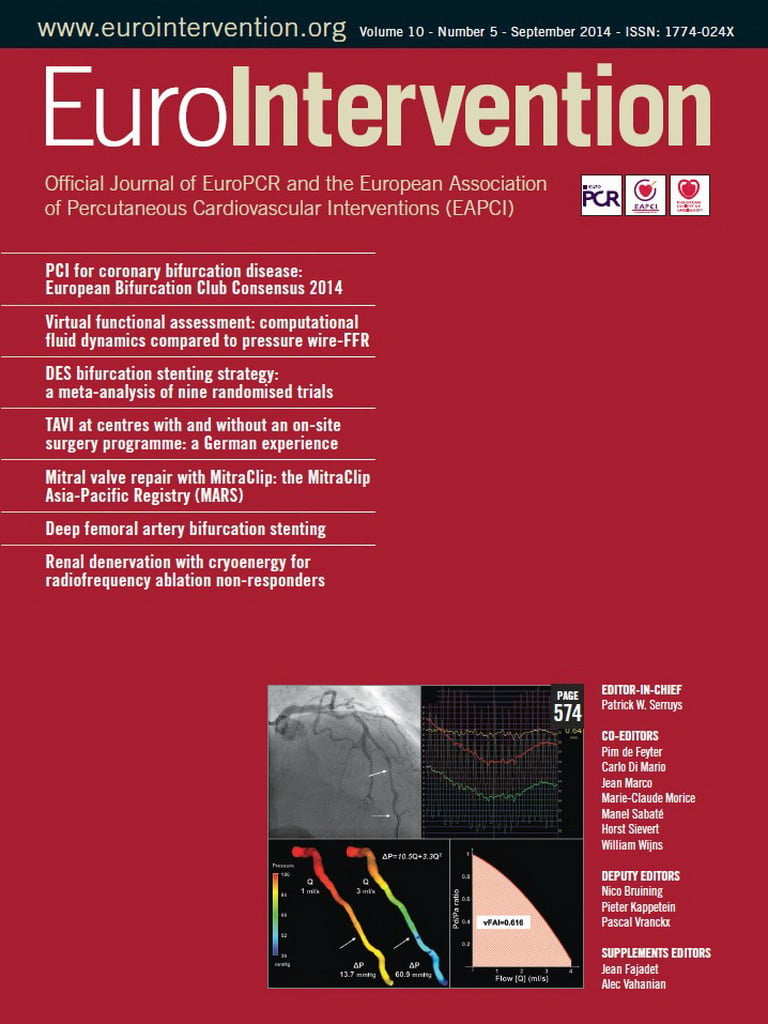Today, faced with the immensity of sources and the continual evolution of technology and data, one of the key roles of the EAPCI is to ensure the clear and efficient dissemination of theoretical and practical knowledge concerning interventional cardiovascular medicine. Our Association is actively involved in several initiatives to help focus available data and experience: these include collaborating with other expert Associations and societies on the creation and publication of clinical guidelines and consensus documents and the establishment, last June, of the Scientific Document Committee (SDC) whose goal is to encourage, determine, supervise and monitor “the preparation and publication of Expert Consensus and Position Papers of the EAPCI.”
The development and publication of these key articles play an increasingly important role in encouraging best practice. Recently, the EAPCI has been involved in the preparation and joint publication of several of these. The first, the latest edition of the joint ESC/EACTS myocardial revascularisation (MR) guidelines, represents both a special contribution of our Association, as well as a close collaboration between us and other scientific Associations. The current edition of these guidelines –as was the case for earlier iterations– represents the work of a group of experts including non-invasive cardiologists, interventional cardiologists and cardiovascular surgeons, chaired by Philippe Kolh and myself. This critical document was published jointly online by the European Heart Journal, EJCTS and EuroIntervention. Historically, the MR guidelines have had a strong influence on our practice, with the first edition in 2010 directed by William Wijns and Philippe Kolh introducing the Heart Team concept, a concept which has since served as a role model and integral part of many other guideline documents. For the current guidelines, the task force performed a systematic review of all randomised clinical trials from 1980 to 2013, comparing coronary artery bypass surgery, percutaneous coronary intervention with various devices including balloon angioplasty, bare metal stents, early-generation drug-eluting stents and new-generation drug-eluting stents as well as medical therapy in patients with stable coronary artery disease. There are important updates related to the appropriate selection of CABG and PCI in patients with three-vessel and left main coronary artery disease, diabetic patients and those with chronic kidney disease, the use of revascularisation in various clinical settings including NSTE-ACS, STEMI, congestive heart failure and cardiogenic shock. Antithrombotic therapy in patients undergoing revascularisation is also reviewed in detail, and incorporates important considerations related to the use of novel P2Y12 inhibitors, pre-treatment in patients with ACS and the use of direct thrombin inhibitors in STEMI. For the first time, the document also contains a section on volume-outcome relationships, providing guidance in relation to operator and institutional competence in CABG and PCI. We urge you all to consult this document1.
Over the course of the recent ESC congress in Barcelona several other joint consensus documents were released or published online. One concerned the management of antithrombotic therapy in atrial fibrillation patients presenting with acute coronary syndrome and/or undergoing percutaneous coronary or valve intervention. This particular publication was a collaboration between the ESC Working Group on thrombosis, the EHRA, ACCA and the EAPCI. Directed by Gregory Lip, it included notable changes concerning preferential recommendations for drug-eluting stents over bare metal stents in patients requiring oral anticoagulation, as long as they are considered to be at low risk of bleeding. This consensus document also represents an important update to previous publications and addresses, for the first time, the issue of antithrombotic therapy in patients undergoing transcatheter heart valve interventions. This document has been published online in the European Heart Journal2.
We have also been actively involved in two other recent consensus documents published jointly with EuroPACE. The first is the EHRA/EAPCI expert consensus statement on catheter-based left atrial appendage occlusion by Bernhard Meier et al3 and the second, directed by Bulent Gorenek et al, is a position paper from the joint EHRA, ACCA, and EAPCI task force focusing on cardiac arrhythmias in acute coronary syndromes4. Both documents provide important guidance for clinicians in daily practice.
Scientific Document Committee
In the last of these consensus documents, you will note that one of the co-authors is Marco Valgimigli who, along with Robert Byrne, are the chair and co-chair, respectively, of the Scientific Document Committee (SDC) of the EAPCI that I mentioned earlier. The SDC was created by our Association with the goal of improving patient care, doing this, in the words of Marco Valgimigli, “by responding to practitioner needs for thorough and comprehensive guidance on a variety of ongoing issues in percutaneous coronary and structural heart intervention that are not met by current guidelines”. By identifying clinical questions and pinpointing those areas where members of the EAPCI need clearer information, the SDC “can give a comprehensive and balanced overview of a chosen topic, summarising existing knowledge, identifying evidence gaps as well as focusing on those areas in need of improvement in the implementation of practice”. Robert Byrne adds that by “coordinating the work of the EAPCI with other ESC Associations as well as other non-ESC scientific organisations, we can achieve more in terms of disseminating and improving knowledge and expertise around patients’ care.”
From the active participation, writing and publication of guidelines and consensus documents, the EAPCI ensures that specialists will have reference to the very best and to the highest quality information available today. The level of interest in these types of publications, and their importance to our members, is borne out by the new Impact Factor for EuroIntervention, which was announced over the summer and has risen to 3.7, a notable increase, which is a further testimony to the work we all do together. The EAPCI is proud to be working closely and in coordination with the editorial board of EuroIntervention, the official publication of our Association.

